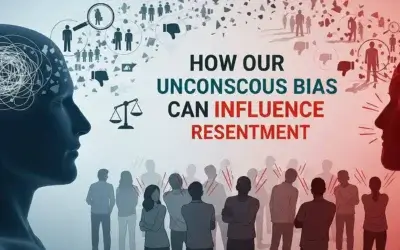
Have you ever wondered why you react a certain way in relationships or why the same patterns seem to repeat with every partner? Your attachment style may offer valuable insight. Developed in early childhood, often by the age of three, attachment styles are shaped by how we connect to ourselves and others. These patterns influence how we give and receive love, how we manage conflict, and how we handle vulnerability and closeness.
In this blog, we explore four core attachment styles and how they impact our romantic relationships: preoccupied, fearful, dismissive, and secure. Understanding your style and the styles of those around you can help you build stronger, more fulfilling relationships. For those interested in related dynamics around anxiety and emotional resilience, some of our other posts explore these themes in greater depth.
What Are Relationship Attachment Styles?
Attachment styles are patterns of emotional responses that develop from early caregiving experiences. They influence how we view ourselves, how we view others, and how we interact in close relationships. The two primary dimensions that shape attachment are anxiety and avoidance. Anxiety reflects how much we fear rejection or abandonment. Avoidance reflects how much we resist depending on or connecting with others.
These two dimensions result in four main attachment styles:
Preoccupied Attachment (High Anxiety, Low Avoidance)
People with a preoccupied attachment style often feel deeply insecure in their relationships. They may crave closeness but fear being rejected or not being enough for their partner. These individuals often rely on their partner for reassurance and may struggle with jealousy or emotional ups and downs.
They are sensitive to signs of rejection and may focus excessively on relationship problems, both real and imagined. As Leslie Becker-Phelps, PhD, notes, this group may overreact to challenges and underestimate their ability to cope. Their high need for connection can lead to patterns of emotional dependency, making forgiveness and conflict resolution more difficult when anxiety runs high.
Fearful Attachment (High Anxiety, High Avoidance)
Those with a fearful attachment style experience a constant push-pull dynamic. They want closeness and reassurance, but are also afraid of emotional intimacy. This often leads to mixed signals, unpredictable reactions, and inner turmoil.
They may seek approval and attention from emotionally distant partners, often through exaggerated emotional responses. The result is a relationship style marked by distress, insecurity, and avoidance of vulnerability. Anxiety and depression are commonly associated with this pattern.
Dismissive Attachment (Low Anxiety, High Avoidance)
Individuals with a dismissive attachment style tend to prioritize independence and self-reliance. They may minimize or ignore emotional needs, both their own and their partner’s. While they may remain in relationships, they often keep emotional distance and avoid discussing deeper feelings.
This group often believes that others are not dependable and protect themselves by downplaying the importance of relationships. They may struggle to express affection or connect through physical touch. When faced with emotionally charged situations, they are likely to withdraw or become passive. Anger may exist beneath the surface but is rarely acknowledged or addressed.
Secure Attachment (Low Anxiety, Low Avoidance)
Securely attached individuals tend to have a healthy sense of self and a positive view of others. They are comfortable with closeness and independence. They can express their emotions openly and are generally able to navigate conflict in constructive ways.
This group is more likely to have grown up with emotionally responsive and trustworthy caregivers. As adults, they value emotional intimacy, remain faithful in relationships, and are able to communicate their emotional and sexual needs with openness and clarity.
Why Your Attachment Style Matters
Understanding your attachment style gives you insight into how you function in relationships and where challenges may arise. It can also help you understand your partner’s behaviour and emotional needs.
For example, if you have a preoccupied style and your partner is dismissive, the relationship may feel like an emotional rollercoaster. Recognizing these dynamics can help you respond with greater awareness rather than reacting automatically.
How to Learn More About Your Attachment Style
Identifying your attachment style can be a valuable step toward personal growth and stronger relationships. Reflect on how you approach closeness, how you respond to conflict, and what patterns have shown up in past relationships.
You might also consider exploring these questions in therapy, especially if your attachment style is causing distress or confusion. In therapy, you can develop new ways of connecting that feel safer, more balanced, and more authentic.
Conclusion
Your attachment style is not set in stone. While it may be shaped by early experiences, it can evolve through self-awareness, intentional effort, and emotionally safe relationships. Whether you find yourself constantly seeking reassurance, avoiding closeness, or feeling torn between the two, understanding your style is the first step toward change.
If you want to deepen your connection with others, build emotional resilience, and shift patterns that no longer serve you, exploring your attachment style is a meaningful place to start. And if you’re ready to take a closer look, we invite you to reach out or explore more resources on our blog.
Be well
Ian Robertson, MSW, RSW











